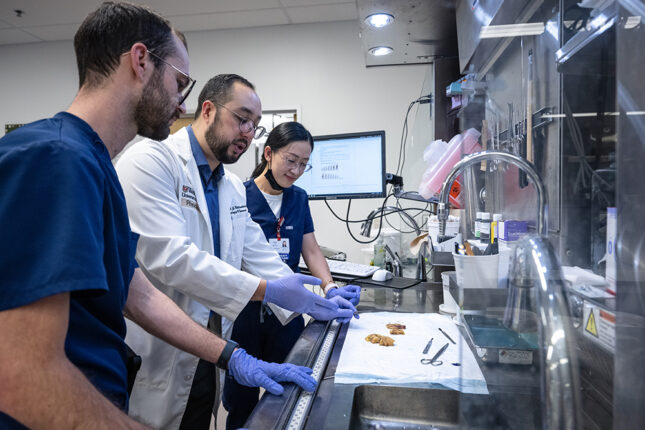
We are featuring experiences of current PGY-1s, PGY-2s, PGY-3s and PGY-4s in their own words to demonstrate the breadth of training and professional opportunities available to residents in the Department of Pathology and Immunology. Please scroll through the profiles below to learn more about our programs and why residents chose Washington University School of Medicine to complete their training in pathology.
Margaret Axelrod, MD, PhD
First-Year Anatomic Pathology and Clinical Pathology Resident
Physician Scientist Training Program
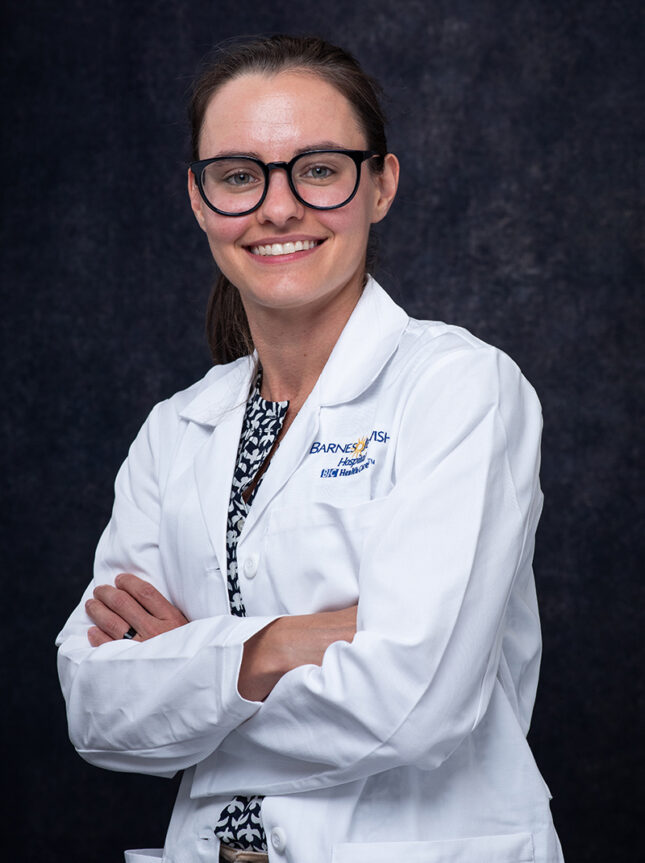
A little about me…
My career goal is to be a physician-scientist who runs my own research lab, broadly in the tumor immunology field, and is an active pathologist. While in my first year of residency, I am exploring my interests in pathology and aiming to narrow down my subspecialty interests.
A typical day looks like…
On a typical day on a surgical pathology service, I preview cases and sign-out with the attending in the morning, attend lecture at noon, and gross (with help from our awesome PAs) and preview in the afternoon. The case type and volume varies by service, but on most services, we get a mix of biopsies, resections and consults. We preview the cases we gross (typically a few resection cases per day) and more. Noon lectures include didactics, unknown slide sessions (including first-year specific unknown sessions) and autopsy (gross organ review) conferences. We also have many visiting medical students, and I have really enjoyed the opportunity to teach both previewing and grossing.
Why WashU stood out…
I chose WashU for the support for research within the department (including having multiple residents pursing the AP-PSTP track), the reputation for strong AP training, the kindness of the current residents, and the city of St. Louis.
What I enjoy about St. Louis…
I really enjoy living in a medium-sized city, with many parks and walkable/bike-able neighborhoods. Some highlights so far include: Forest Park (walking, biking, the zoo), Francis Park (Rockwell Beer Garden, many weekend events), Missouri Botanical Garden, and historic St. Charles. I’m looking forward to exploring more!
My advice for future applicants…
I hope you enjoy the process! I’m happy to answer any questions.
El Harith Elsiddig, MD
First-Year Anatomic Pathology and Clinical Pathology Resident
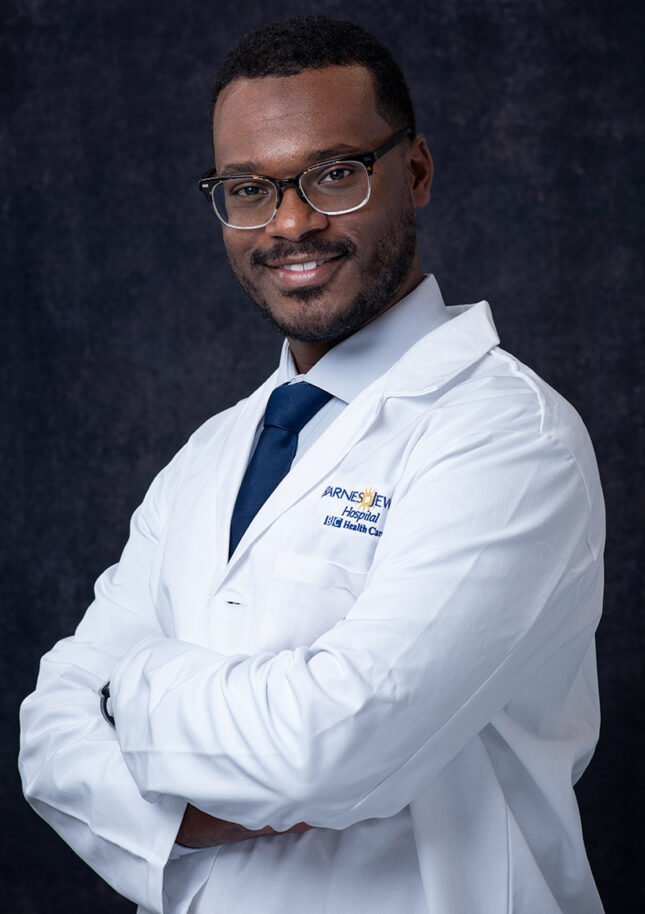
A little about me…
I am originally from Chicago, and that is where I also attended medical school. My professional interests change weekly, as I find many aspects of my training quite fascinating. Outside of work I enjoy basketball and soccer, chasing my daughter around outdoors, road trips, and exploring St. Louis with my family.
A typical day looks like…
My day depends on the service that I am rotating through. Usually, I will arrive anywhere between 6-7 AM, depending on the case load. I will begin my day by completing any tasks from the day prior that need to be finished, and then begin previewing cases for the day. I will then sign out the cases with the attending pathologist on service at a pre-agreed time. After sign out, I will tie any loose ends from the morning and anything from sign out that needs to be done. I will then check the grossing load and decide what time to head to the grossing room to begin working on the specimen. After lunch, I will head to the grossing room, finish whatever needs to be done, and check to see if any new cases need to be previewed, which usually takes me to late afternoon/ early evening. I will usually wrap up my work between 5:30-6 PM and put off any non-urgent things for the next morning.
Why WashU stood out…
The interview day gave a great impression of the program and the reputation speaks for itself. I enjoyed my conversations with the trainees and the rest of the interviewers. The available resources, trainee support, and in-house fellowships were also a big selling point.
What I enjoy about St. Louis…
St. Louis is a medium-sized city with a small town vibe, and I really enjoy that. It is affordable, diverse, and all parts of the city are easily accessible. My favorite thing about the city is how family-friendly it is. My wife, daughter, and I love exploring all the fun things to do in the city, and have so much more to see. From the amazing zoo, forest park, science center, museums, and great food, there is so much to do and see.
My advice for future applicants…
Ask any and all questions during your interview day. It may be difficult to get a true feel for a place, city, or program without getting the answers you need.
Margaret Fink, MD
First-Year Anatomic Pathology and Clinical Pathology Resident
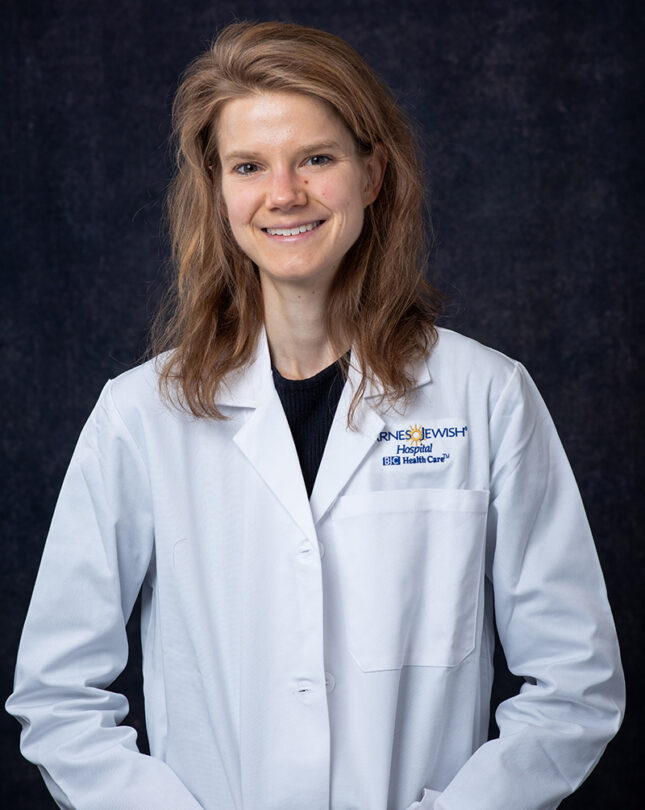
A little about me…
I’m originally from Chicago, went to Northwestern for medical school, and chose pathology because of the diagnostic nature of the specialty, as well as the intellectual challenge. In my free time I love cooking, doing jigsaw puzzles, and riding my Peloton bike.
A typical day looks like…
I get to work around 7-8 AM, depending on how much I have to preview before sign-out (we have a cool app that lets me see how many cases are in my mailbox from home!). When I first get to work, I preview any biopsies that came in that morning, and any larger cases that I didn’t choose to preview the day before. During previewing, I look at the cases, come up with a diagnosis, and draft the report. I also eat breakfast, chat with a few co-residents, and answer any emails during this time.
Around 9:30, I head to sign-out with my attending. We look at all the slides for the biopsies and other cases I previewed and adjust the diagnosis/report accordingly. We also figure out if we need to order any stains to help with the diagnosis or further patient care. Sign-out is a great time to learn as well – I feel like I learn the most about pathology during this one-on-one time with my attending.
Sign-out is usually done by just before noon. At noon, we almost always have a conference or didactic to attend. Sometimes lunch is provided too! We get lunch delivered every Friday, and at occasional other special conferences during the week. Our noon conference time is protected for our learning, so I always have time to eat lunch and see my awesome co-residents as well.
Right before or right after conference I finish any reports and order special stains from sign-out. I also look at what I have to gross in the afternoon, and look up the relevant patient history before heading to the gross room. I also sometimes review the gross manual if it is a new case I have never grossed before.
The amount of time I spend in the gross room varies a lot by service and even day-by-day. On average, I would say I’m in the gross room from about 1:30 – 4:30 PM, give or take a couple hours. Some days I don’t have any grossing at all, and some days I have more. In the gross room I get to see a lot of really interesting specimens – residents only gross the more complicated and educational cases. Our PAs handle a lot of the work. Our PAs are really awesome people and make the gross room so fun! We always are listening to music, cracking jokes, and I am friends with some of them outside of work too. Fun fact: my favorite thing to gross are lung explants!
After grossing, I head back to my desk to preview larger cases for sign-out the next day. This takes about one to two hours, depending on how much I want to do that evening vs. the next morning, and how many cases appeared in my mailbox during the day. It’s great to have the option of when to preview, sometimes I leave right after grossing if I’m tired or have other evening plans, but mostly I try to get as much done as possible in the evening and then show up later in the morning.
And that’s a wrap! I head home and relax the rest of the evening. I’ve only been a resident a few months, but I already feel like this is the best job in the world.
Why WashU stood out…
So many reasons, but the biggest was the residents I interacted with during my interview! Everyone seemed really happy and like they truly enjoyed each other’s company. I also really liked the size of the program. We have a lot of residents and fellows, and it is awesome to get to know so many people of so many different backgrounds. Despite it being so big, I really do feel close to my co-residents and it is definitely like a family.
What I enjoy about St. Louis…
Coming from Chicago, I was ready for more trees and less cement. Saint Louis has so much green space, not only in our massive Forest Park right next to the hospital, but outside of the city there are so many places to walk and hike. Every weekend I try to drive to a different park in the suburb area for a long walk. St. Louis definitely has all the perks of a big city, but more access to these green space areas. Also, I really really like gooey butter cake.
My advice for future applicants…
Be yourself! As I mentioned earlier, one great thing about our program is the diversity of the many residents and fellows we have. We want to learn who you are!
Ahmad Hedayat, MD
First-Year Anatomic Pathology and Neuropathology Resident
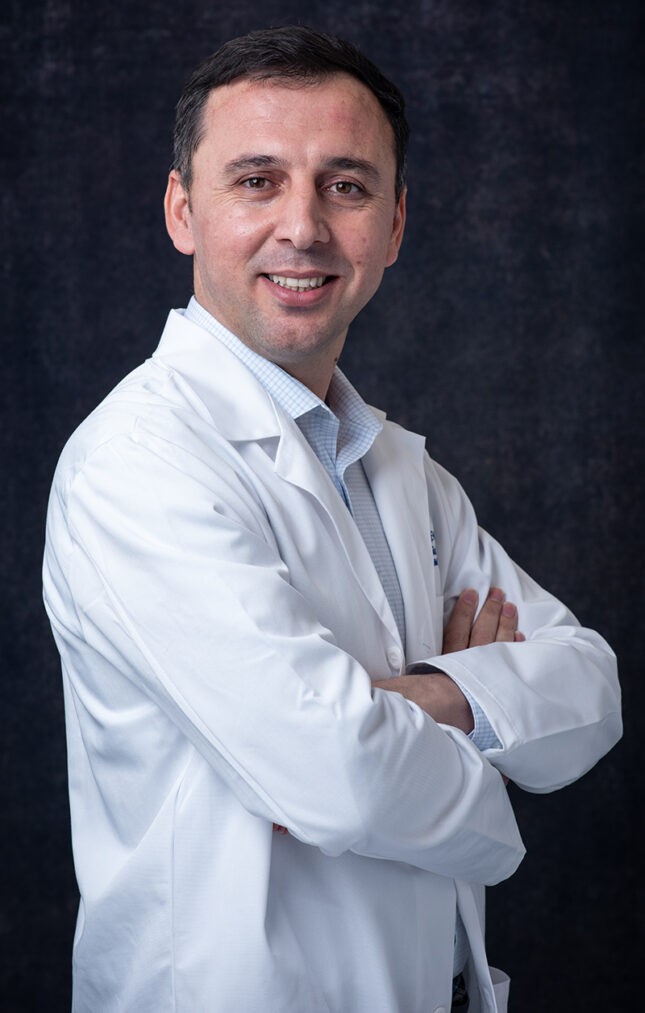
A little about me…
I pursued my MD in Turkey. I took on a postdoctoral research fellowship, navigating the complexities of atherosclerosis and Alzheimer’s at Mayo Clinic, Yale University, and most recently, Rush University Alzheimer’s Disease Center. Currently, as an AP/NP resident, I’m deeply fascinated by Alzheimer’s Disease and brain tumors. When I’m not in the hospital, I love exploring new places with my wife and son, kicking around a soccer ball, biking, and pouring my artistic side into graphic design.
A typical day looks like…
My day as a PGY-1 pathology resident starts early. By 7:30 AM, I’m at the hospital for morning signout, previewing the previous day’s cases and getting ready. Around 9:00 AM, I attend the signout, usually finishing by 10:00 to 10:30 AM. At noon, we typically attend didactics or unknowns or some other presentations while having lunch. In the afternoon I either head to the grossing room or previewing some of my cases for the following day. By 4 or 5 PM, I wrap up, ensuring everything’s set for the next day. It’s a busy but fulfilling routine, blending pathology work with continuous learning.
Why WashU stood out…
I chose WashU’s pathology residency for a multitude of reasons. At the forefront, Washington University is globally recognized for pioneering in medicine, and I was drawn to its pathology department’s reputation for pushing the boundaries of the field. The chance to engage with and learn from esteemed faculty, who are at the cutting edge of pathology research and practice, was particularly appealing. The diverse case mix ensures that as a resident, I’m not only exposed to routine cases but also rare and challenging scenarios, preparing me comprehensively for my future career. Beyond the academic and clinical aspects, the collegial and nurturing environment, evident during my interviews, made me feel that this was a place where I could thrive, not just as a budding pathologist, but also as an individual. Furthermore, the state-of-the-art facilities and resources available at WashU would be invaluable in my training. From advanced laboratories to interdisciplinary collaborations.
What I enjoy about St. Louis…
Its iconic landmarks like the Gateway Arch, its thriving arts and music scenes, delectable local eats, and the inviting ambiance of Forest Park. The city’s warm-hearted community truly makes it special.
My advice for future applicants…
I did a few rotations at different institutions, but the faculty, residents and pathology assistants at WashU stand out for their constant help and support specially at when you start your pathology journey. The environment is not only friendly and collegial, but there’s also a strong culture of assisting one another. Moreover, the training provided here is top-notch, preparing us comprehensively for our future roles. Rest assured that there will be always a hand when you need any kind of help here.
Carly Maucione, MD
First-Year Clinical Pathology Resident
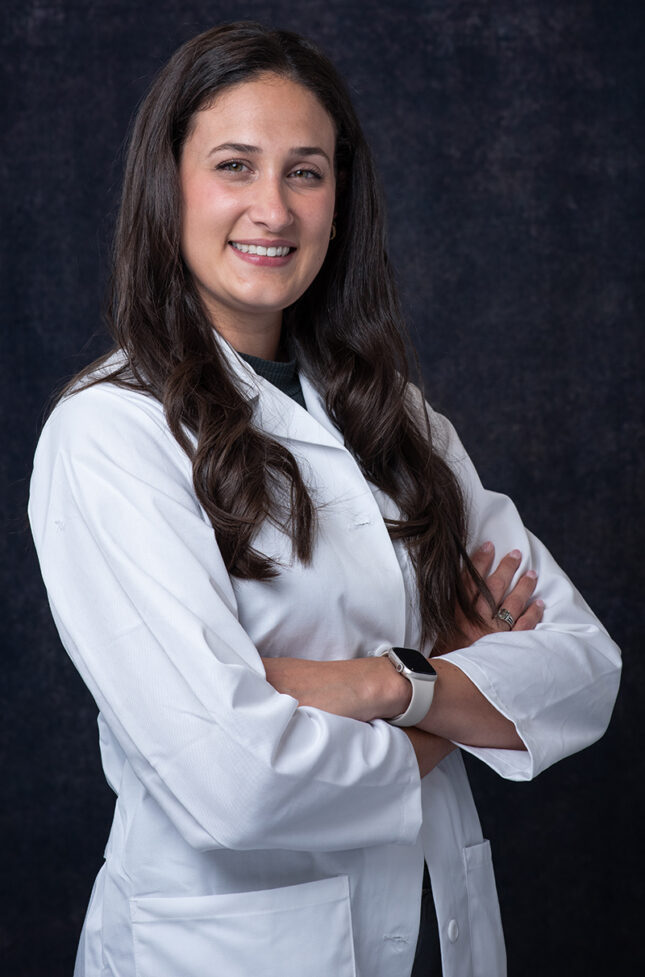
A little about me…
I am originally from the East Coast, and when I moved out to St. Louis for residency, it was my first time in the Midwest. I am on the CP-only track, with interests in transfusion medicine and hematopathology, although with little experience in other areas of CP.
A typical day looks like…
I am currently rotating through the core-CP curriculum. My typical day involves a few hours of structured didactics, plus scheduled talks and presentations by my fellow trainees and the faculty. I have time throughout the day to prepare for didactics, my own presentations, and work on research. During on-call weeks, clinical duties come before our other pursuits, and I am frequently meeting with senior residents, fellows, and faculty throughout the day to discuss interesting cases and call questions. The best days are those with free lunch, which happens pretty frequently!
Why WashU stood out…
I wanted a program with a that could offer comprehensive and hands-on CP education, and WashU is known as a leader in the CP space. I also got the feeling during the interview process that trainees were generally happy, felt supported by the program, and enjoyed each other’s company – something I found to be true once I got here.
What I enjoy about St. Louis…
Forest Park is deserving of its recognition as the best city park in the US. A lot of the areas near the hospital and campus are walkable, and it’s fun finding new places to eat and hang out with friends.
My advice for future applicants…
I received such varied advice when applying about what would be best for me as a future pathologist, and it became confusing. I found it most helpful to talk to attendings in my desired area of focus, as they had advice more specific to my goals, as opposed to attendings in other areas. I tried to keep an open mind during the interview process – I learned a lot more about what programs had to offer during the actual interview process, than I did from word of mouth or their websites. Ask lots of questions, and don’t be afraid to reach out to people!
Grace Perkins, DO
First-Year Clinical Pathology Resident
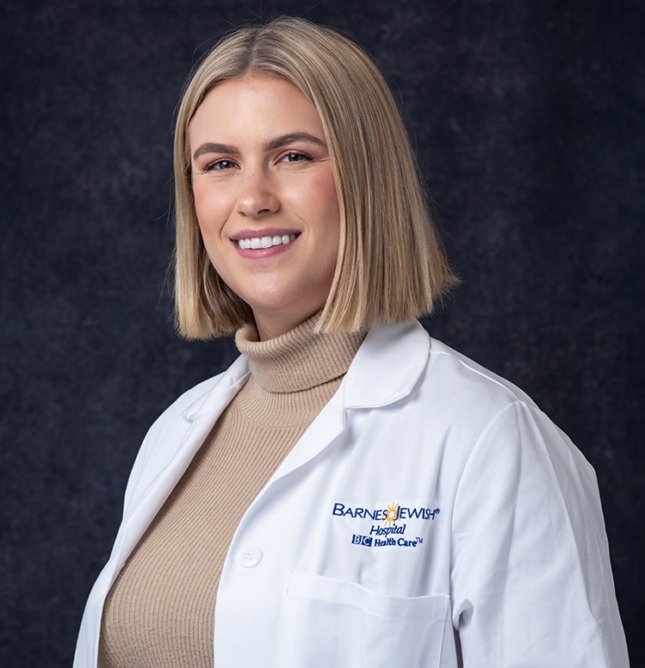
A little about me…
I’m in the CP-only program and have an interest in medical microbiology. I’m originally from Indianapolis, IN, and completed medical school there. I enjoy spending time with my dog, Echo, who is just the sweetest, goofiest pitbull. I’m currently training to run a half marathon (first ever!) and when I’m not running I like to cycle. I also enjoy reading murder mystery books and watching scary movies.
A typical day looks like…
As a resident on the Transfusion Medicine service, I get in to work about 8-8:30 AM (if not the primary call resident, if primary, I get in a bit earlier) and start by checking the patient list for who we will be doing procedures for that day. On Transfusion Medicine, we do apheresis procedures, which means the patient’s blood is run thru a machine to separate the components of the blood and take off specific components, like plasma, based on the underlying disease of the patient. We have rounds every day at 9:30 AM in the apheresis clinic where we discuss the patients for the day and any issues going on in the blood bank. We also discuss transfusion reactions. After discussion, we will go see each patient and check in to make sure they are doing ok with procedures and don’t have any questions. We get to the blood bank around 11 and discuss any product shortages or strange antibody screen results. Most days we have a noon lecture. The afternoons are spent studying for boards, reading papers sent by attendings, or following up any issues with transfusions. Often we have to call the primary clinical teams to discuss their plans for the patients, as apheresis is not a cure for diseases and is merely a bridge while the primary team figures out a medication regimen. Most days are over around 4:30, which gives you plenty of time to run errands, see friends, and work on your hobbies outside of work.
Why WashU stood out…
WashU is a great program to complete residency. The volume of cases seen by Barnes-Jewish Hospital offers plenty of learning opportunities for routine cases as well as the rare cases. WashU also has very new, state of art facilities and assays for use in clinical cases, which lets you stay up to date on new technology and methods for diagnosis.
What I enjoy about St. Louis…
Forest Park is definitely the best thing about St. Louis! The park is huge and has many different scenic areas, trails, or activity centers for you to explore. My dog loves walking around the park. I can’t wait to see the leaves change colors in the fall.
My advice for future applicants…
Just be yourself on the interview. People here are easy to get along with and are very down to earth. The program is focused on finding great candidates that are great people with potential, not just the highest scoring applicants.
Franklin Woode, MD
First-Year Anatomic Pathology and Clinical Pathology Resident
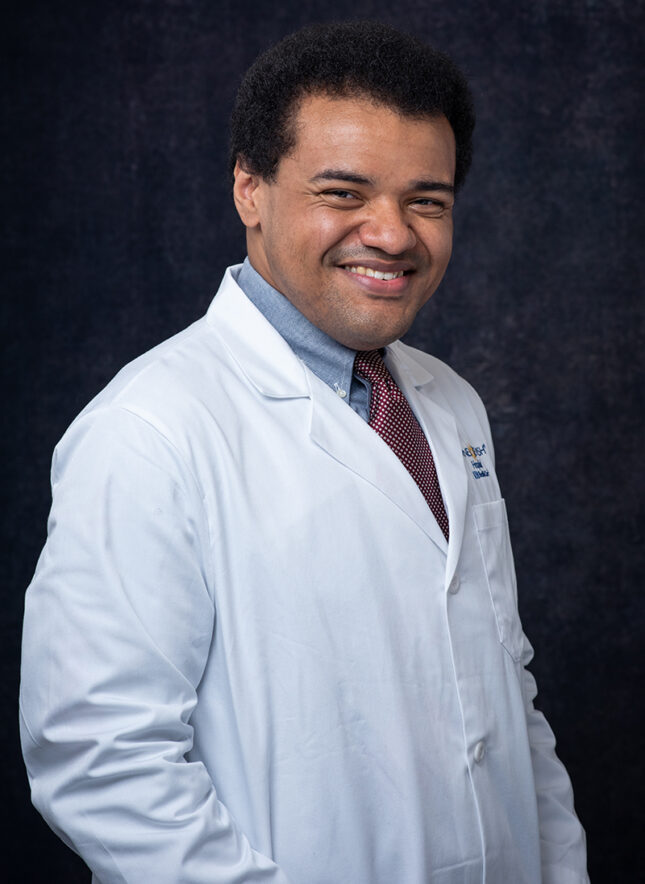
A little about me…
I am a first-year resident in the AP/CP training program at Wash U. I am from the St. Louis area originally (specifically, a small town called Barnhart about 25 miles south of the city). I am currently undecided with regard to subspecialty, but I have an interest in transfusion medicine. But mostly I’m keeping an open mind and seeing what I like.
A typical day looks like…
I live in the Central West End a few blocks away from the hospital, so my work day typically begins with a roughly 15-minute walk to the office in order to arrive around 8 AM (or perhaps an hour or so earlier depending on the service and what my case load for the day looks like). I have not yet had a CP rotation, but for AP services, case sign-out usually starts some time between 9 and 11 AM and ends by noon at the latest. Then there is usually a noon lecture, followed by afternoon specimen grossing. Grossing is very interesting and usually light, but sometimes there can be very complicated specimens that take a lot of time. Luckily the pathology assistants in the gross room are incredibly helpful, and the other residents and attendings are usually available for questions as well. There can also be a lot of cases to preview prior to sign out everyday, but I like to do the bulk of my previewing the evening before to avoid being in a hurry in the morning. Occasionally when things get busy, I am at the hospital until 7 or 8 pm or so previewing cases or working on autopsy reports, but as I’ve developed a bit more efficiency, I find I am leaving around 5pm or a little after most of the time. Of course, mistakes are inevitable, but most attendings have been very patient with me during the learning process.
Why WashU stood out…
I am from the St. Louis area originally. I did my undergraduate training out on the east coast, and went to medical school at Mizzou, so I have been looking forward to returning home to Saint Louis and being closer to family for a while now. I was also interested in attending a program that has robust clinical pathology training, particularly in transfusion medicine, which I have some interest in. I have heard great things about the transfusion medicine rotation at Wash U, and I look forward to experiencing it.
What I enjoy about St. Louis…
There are a lot of trees in St. Louis, particularly in the Central West End where I live. It seems like a small thing, but one thing I often miss when I visit other cities is the sight of green. The shade is nice too, because St. Louis can get hot during the summer. I also like taking long walks, and Forest Park is a great place to go for a stroll when I’m feeling cooped up.
My advice for future applicants…
I was once advised by a pathologist (though I think it applies to any specialty) to pick a residency program where you will be as busy as possible (within reason, of course). That way you will see as much as possible while you are in training, and you will be less likely to run into surprises when you become an attending. I believe that the work load at WashU has been busy enough to be challenging without being overwhelming, and I think I will be well-prepared for fellowship and beyond by the time my four years are completed.
Justin Burk, DO
Second-Year Anatomic Pathology and Clinical Pathology Resident
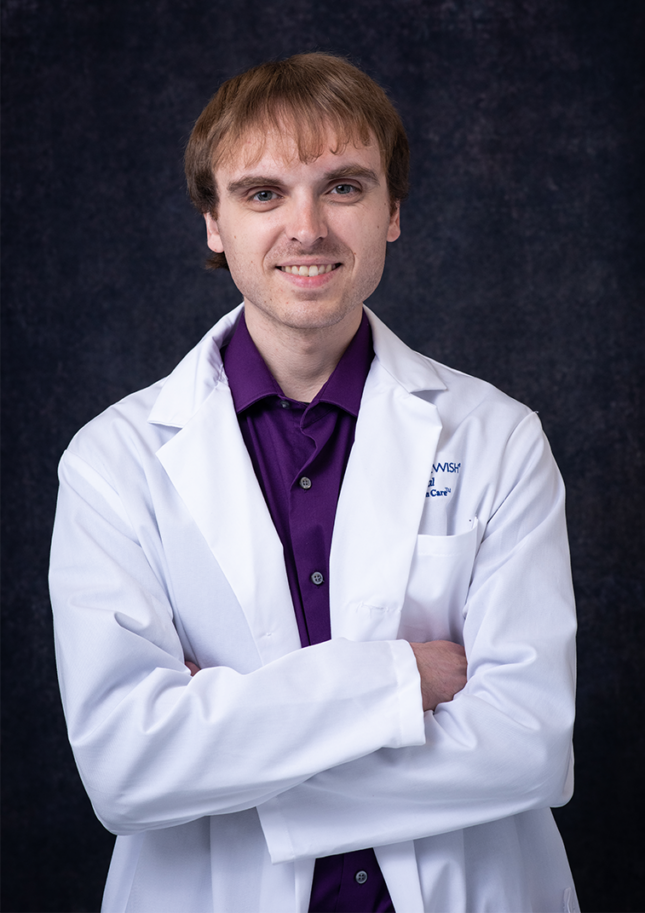
A little about me…
I grew up in Youngstown, Ohio, got my undergrad degree from University of Pittsburgh, and completed medical school with Lake Erie College of Osteopathic Medicine. In my free time, I enjoy reading, video games, hockey, exploring the city, and losing in our department fantasy football league.
A typical day looks like…
It depends on which service I am on. On surgical pathology rotations, I typically get to the hospital around 7 AM to preview the morning biopsies. Sign-out usually begins around 9 AM, and typically lasts until 11-11:30 AM (depending on how many cases we have). After correcting my reports, I grab my lunch and attend our noon didactic conference. I head to the gross room after didactics ends, and usually gross until 4-4:30 PM. After grossing, I pick up the slides for any resection cases that are ready, and I preview until I either finish or until my brain shuts off (whichever happens first). On average, I head home sometime around 5:30-6:30 PM to eat dinner and do something non-work related in the evenings.
Why WashU stood out…
I wanted to go to a high volume program with abundant learning opportunities that would help me develop into a well-rounded pathologist. I felt WashU hit those criteria, and I had a good experience on my interview day. Also important to me was that I lived in a city I would feel comfortable living in. While I had never been to St. Louis before matching here, I have a couple of friends who had lived here for a while, and I felt like St. Louis would be a good match. Having been here for a year, I can also say that I currently like the program even more now than on the day I matched here, and I can’t imagine being anywhere else.
What I enjoy about St. Louis…
I like that St. Louis has something for everybody. We have arts, great parks, museums, professional sports, and a large variety of restaurant and brewery options. It’s a very affordable city that offers urban amenities without major traffic or expenses. It’s also nice having an airport in town with easy access to basically anywhere else I want to go.
My advice for future applicants…
There are plenty of resources to learn about the programs you’ll apply to and interview with, and plenty of people online and in person who will have varying opinions of those programs. At the end of the day, no matter what anybody else thinks, you should go somewhere you’re comfortable and that respects you as an individual and as a resident.
Clay Marolt, DO
Second-Year Anatomic Pathology and Clinical Pathology Resident
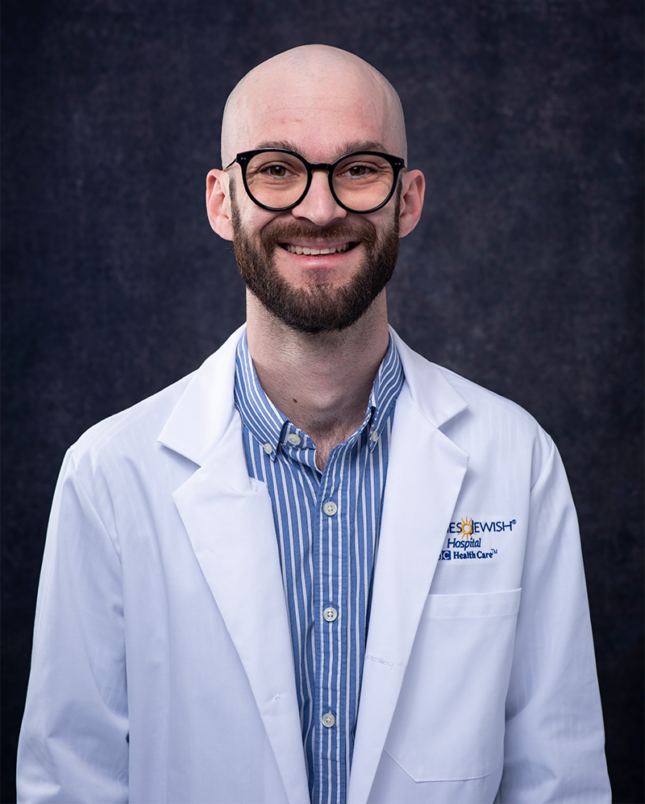
A little about me…
I’m originally from St. Louis, MO, but I attended medical school at Kansas City University in Kansas City, MO, and I’m currently a second year AP/CP resident here at WashU. In my free time, I enjoy cooking, hiking in National Parks, and spending time with my wife and dog. I’m currently interested and considering a fellowship in Hematopathology.
A typical day looks like…
I’m an early bird, so I like to get to campus a little earlier than most. I spend my morning previewing any new cases that have come in and signing out with my attending. At noon I attend conference and eat lunch, and I spend the afternoon grossing cases. When I’m finished, I preview some cases for the next day, and usually leave around 5-6 PM.
Why WashU stood out…
Since I’m originally from St. Louis, choosing to come back home was an easy choice for me. I also new that WashU would provide me with an incredible education, and also help me explore lots of different possibilities for what I want to subspecialize in. When I did my away rotation here as a medical student, I immediately clicked with the residents and had a great time – so I knew that this would be a program that I’d be very happy at!
What I enjoy about St. Louis…
I LOVE all of the free things to do here. Forest Park is incredible – with an abundance of things to do including the Zoo, Art Museum, History Museum, and the Muny (an outside play and musical series). There’s also an incredible selection of awesome restaurants and breweries in explore!
My advice for future applicants…
This is a great program where you’re going to definitely work hard in. Because of that, you’re going to learn so much and I think it’ll set you up to be the best Pathologist you can be, with tons or opportunities no matter what path you want to go down.
Brenndan Crumley, MD
Third-Year Anatomic Pathology and Neuropathology Resident
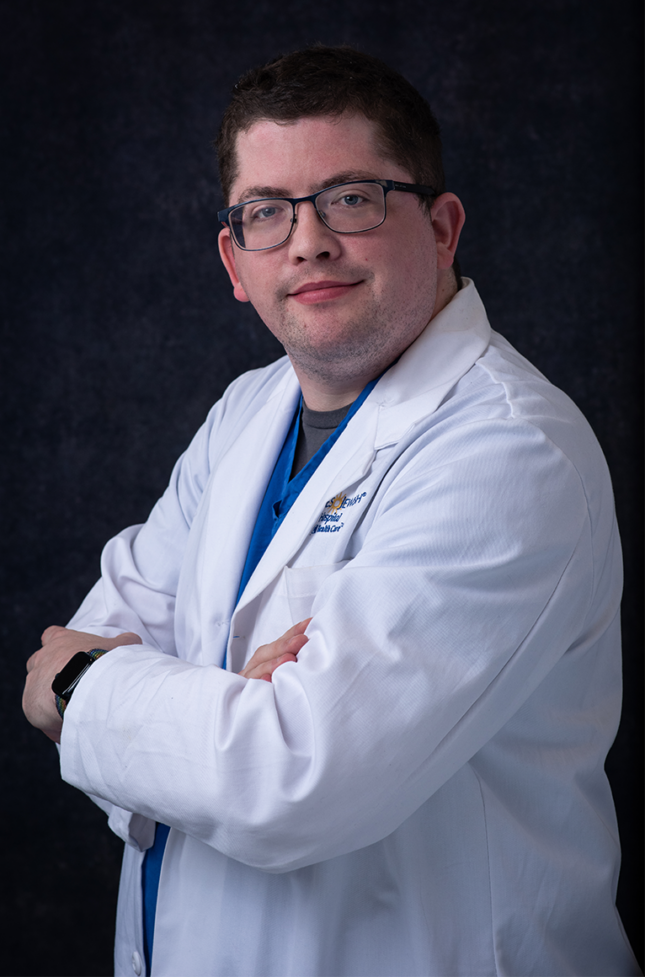
A little about me…
I’m from St. Louis and I’m very excited to be back for the beginning of my pathology career.
I’m this year’s Autopsy Senior Resident Educator, and I work with first-year anatomic pathology residents and autopsy attendings and staff to introduce new residents to autopsy and make sure they’re comfortable with the process and with writing reports. Next year, I will start the Neuropathology fellowship at WashU. Careerwise, I’m hoping to do a mix of clinical neuropath (potentially forensics as well) and research into brain tumors and neurodegeneration.
Outside of work, I’ve been carefully curating a collection of board games to motivate myself to have a social life.
A typical day looks like…
For most surgical pathology services, I’ll have previewed the big cases the night before, so I’ll come in around an hour and a half before signout (so usually 7:30 or 8 AM) to preview biopsies. If it’s a rotation with very few biopsies, I’ll come in a little later. Signout can go anywhere from a half hour to three plus hours depending on the service and the attending, but we usually have noon lectures or talks. After that, I’ll head to the gross room. Once I finish grossing, I’ll preview the big cases for the next day then go home. If I had a lot of cases to gross I might save some of them for tomorrow so I can make sure I have time to unwind at home.
Why WashU stood out…
I was drawn to the high volume combined with the enormous area from which we draw our patients. Residency at WashU is definitely busy, but busy is how you learn because the more difficult cases you see with an attending to teach you and walk you through things, the more confident you’ll be when you’re signing out those cases yourself. I greatly appreciate the size of the program as well. I started as an anatomic and clinical pathology resident, but dropped clinical pathology to take the Neuropathology fellowship spot. I may not have been able to do this in a smaller program.
What I enjoy about St. Louis…
Forest Park is very walkable and beautiful essentially year-round. Also, St. Louis is very affordable. The zoo and museums are free. Finally, the number of small neighborhoods means you can always find something new to do.
My advice for future applicants…
The most important thing to look for in a program is whether you will enjoy your time there and be able to build lasting relationships with the residents, fellows, and attendings. Rotate here if you can; the best way to see if you’d be happy at a program is to see it in person. Also, try to have multiple mentoring relationships both before and during residency so that you get as many viewpoints as possible to make the most informed decisions about your training and career.
Patricia Hernandez, MD
Third-Year Clinical Pathology Resident
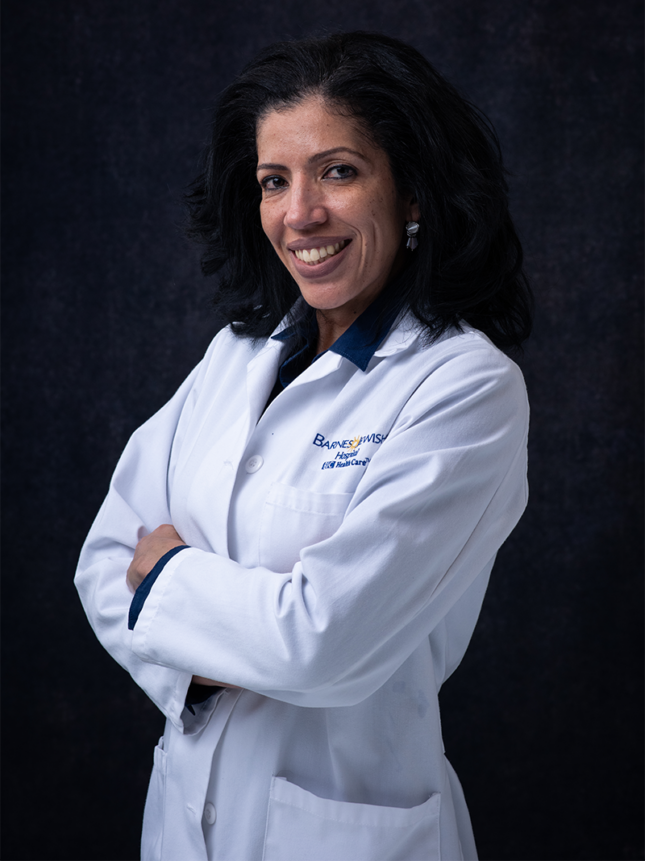
A little about me…
I am a third-year resident on the CP-only track.
A typical day looks like…
It varies according to the rotation: On Transfusion service, we round patients undergoing apheresis or oversee the outpatient apheresis center, handle transfusion reaction, and take care of blood bank inventory. On Microbiology, we have rounds to discuss interesting findings on plates, MALDI or molecular technologies for identification of microorganisms (and antimicrobial resistance), and we orient clinicians to most appropriate tests and serve as consultants. On the other hand, on Hemepath, we do a more “AP” rotation, with templating flow cytometry, bone marrow/ lymph node/ tissues biopsies and sign out with attendings. On Molecular, we work and template NGS cases and sign out with attendings. And we do more things that are not possible to list here. For any activity, we have a senior resident/ fellow and attending to assist with questions and supervise. Also, we have a lot of didactics activities!
Why WashU stood out…
I chose WashU because I knew I wanted to pursue academic career and WashU is well-known by the research output. Also, the possibility to have exposure to Informatics and Molecular, with these fellowships available in-house were very important for my decision. Also, the program is pretty flexible and tailored to attend residents’ needs. But what makes me happy about my choice every day is the people. Working happily with amazing colleagues, attendings and hospital staff is the most important thing!
What I enjoy about St. Louis…
Forest Park is a clean and beautiful place to walk my dogs or to practice long distance running.
My advice for future applicants…
I was in your shoes not long ago trying to make my decision after going to virtual interviews. Our program is fantastic and it was my best decision. We are also happy to answer any question you may have! Welcome to Pathology!
Nicholas Spies, MD
Third-Year Clinical Pathology Resident
Clinical Pathology Chief Resident
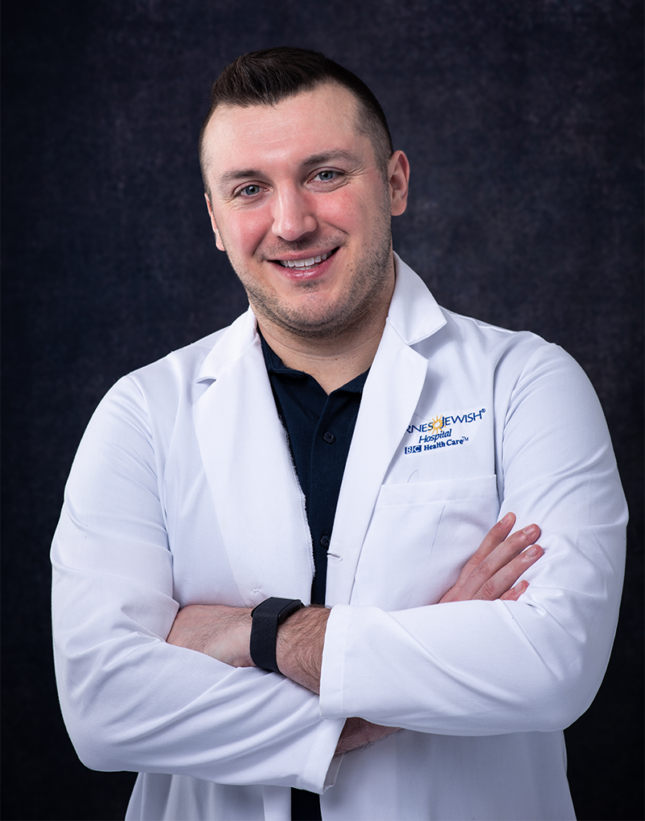
A little about me…
I am a third-year CP-only resident interested in informatics and quality improvement.
A typical day looks like…
My clinical responsibilities in the third year of CP residency are almost entirely elective or research time. I have a few projects going on, which I could really be working on from anywhere and at any time. I also wear the CP chief hat this year, which has me in the 4th floor resident room from around 7:00 AM-5:00 PM most days so that I’m available for the residents on call for the CP services.
Why WashU stood out…
I LOVE St. Louis, and couldn’t think of anywhere I’d rather be. My path through medicine has taken a few twists and turns, but WashU has been a constant. From undergrad, med school, OBGYN internship, and now CP residency, I am what we would call a “WashU lifer”. The people, the clinical breadth, the research opportunities, and the trainees are all major factors in my decisions to stay around.
What I enjoy about St. Louis…
Cardinals baseball, Blues hockey, and now City FC soccer! Plus, the food is great, the cost of living is easily managed on a resident’s salary, and there’s a ton of free stuff to do all over the place.
My advice for future applicants…
Definitely don’t hesitate to reach out to residents before and after your interviews!
Safee Ahmed, MD
Fourth-Year Anatomic Pathology and Clinical Pathology Resident

A little about me…
During my time in residency, I’ve developed a keen interest in the intricacies of diagnostic pathology and the critical role it plays in patient care. I’ve had the privilege of working with experienced mentors and fellow residents, which has deepened my understanding of the field.
A typical day looks like…
A typical day in my work involves a dynamic blend of responsibilities. I spend a significant amount of time examining patient specimens, ranging from surgical pathology cases to clinical laboratory tests. Collaborating with a diverse team of healthcare professionals, including pathologists, clinicians, and laboratory staff, is a fundamental part of my daily routine.
Why WashU stood out…
Choosing Washington University for my pathology residency was a clear decision for several reasons. The program’s reputation for excellence in both research and clinical practice was a major draw. The opportunity to learn from world-renowned experts and the strong emphasis on fostering a supportive and collaborative learning environment were also key factors. WashU’s commitment to innovation and its robust resources for residents make it an ideal place to train in pathology.
What I enjoy about St. Louis…
St. Louis offers a unique blend of cultural diversity and a rich history. One of my favorite things about the city is its vibrant arts and music scene, including renowned institutions like the Saint Louis Art Museum. The city also boasts beautiful parks and green spaces, making it easy to unwind and enjoy the outdoors. Additionally, St. Louis is known for its diverse culinary scene, offering a wide range of cuisines to explore.
My advice for future applicants…
Align your career goals with the strengths of the WashU pathology residency program. Be proactive in seeking mentorship and research opportunities, as the program offers a wealth of resources in these areas. Embrace the collaborative atmosphere and engage with your peers and mentors to maximize your learning. Lastly, stay curious and open-minded. Pathology is a dynamic field that continues to evolve, and your enthusiasm for learning will serve you well in your training and beyond.
Pooja Khonde, MD
Fourth-Year Anatomic Pathology and Clinical Pathology Resident
AP Co-Chief Resident
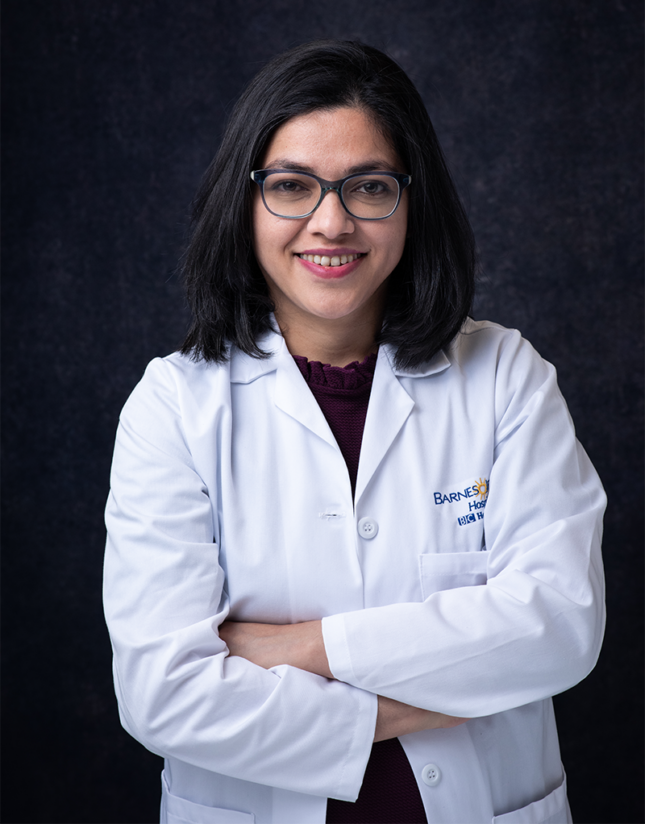
A little about me…
I am an IMG from India having pursued a residency in pathology and moved to the U.S. in 2018. Now, I am a AP/CP PGY-4 resident. I enjoy the work-life balance that my training program offers.
A typical day looks like…
I have early morning tea followed by a walk to work at around 7-7:30 AM. Once at work, I preview biopsy cases, sign out until noon and attend noon didactic until 1 PM. Then, I order stains or follow up on cases until 2 PM, head to the gross room, preview routines for the next day, and leave around 5:30 PM.
Why WashU stood out…
The warm, welcoming, courteous, helpful people I met during my interview visit as well as the the ability to embrace diversity put WashU on the first spot of my match list.
What I enjoy about St. Louis…
Forest Park, the Science Center, Botanical Gardens, Cherokee street for Mexican food, and the Central West End for being my home. Also, I enjoy the food scene in general, year-round festivities (for example, Boo in the Zoo, Glow Show and Japanese New Year celebrations at the Botanical Gardens, and Balloon Glow at Forest Park), a day spent at the Arch, and numerous breweries in and around St. Louis.
My advice for future applicants…
This is good place to have a robust yet balanced and rich AP/CP training. You will be busy but you will also pampered. St. Louis is much under-rated as a city, it is not at all even close to as how its depicted.
Patrick Morse, MD
Fourth-Year Anatomic Pathology and Clinical Pathology Resident
AP Co-Chief Resident
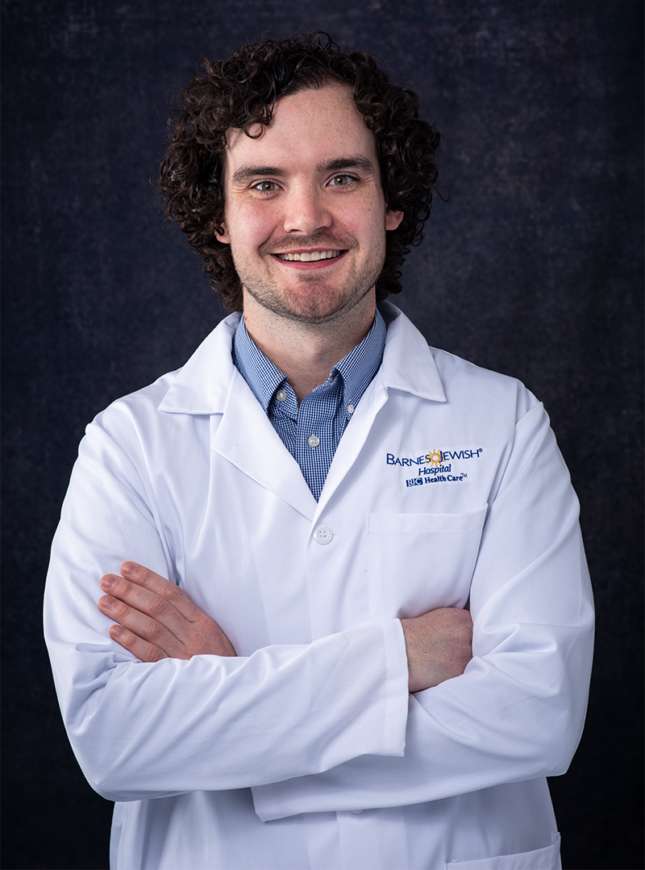
A little about me…
I am fourth year AP/CP resident and AP co-chief. I am from rural Missouri, went to University of Missouri-Columbia, and now enjoying my time in Saint Louis. Additionally, I will be staying for cytopathology fellowship.
A typical day looks like…
The typical day depends on the individual service or rotation. In general, I would say our trainees find out program flexible and I think attendings are supportive of our work-life balance. I prefer to come early, but I know others prefer a different schedule. The important thing is to set up a routine that best serves the clinical care of our patients.
Why WashU stood out…
I was fortunate to have an away rotation at WashU during my fourth year of medical school. I was struck by the cohesiveness and support of the trainees and I knew my education would be best served in this type of residency environment. Additionally, I think many places have strong AP backgrounds but may struggle with the CP aspect. Balanced education was particularly important to me.
What I enjoy about St. Louis…
It’s a medium-sized city with manageable commutes and affordable housing. I own a house and enjoy keeping up with chores, but also good city living close to the hospital. There are plenty of diverse food options. Also, there are great nature trails and camping outside the city (that I like to explore with my doggo).
My advice for future applicants…
Keep calm and enjoy the process. I think the most important decision is attending a residency that puts in the position to best serve patients and advances your career goals.